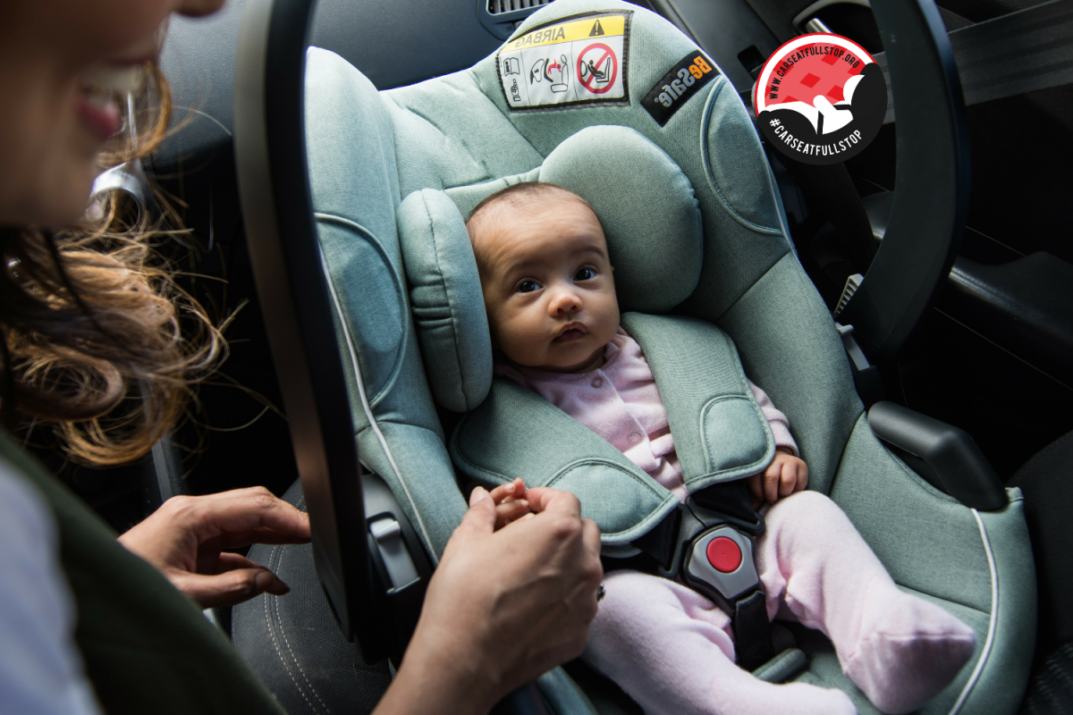
Ford South Africa Partners with #CarseatFullstop on Child Seat Safety
- Ford South Africa is proud to partner with #CarseatFullstop to promote child seat safety
- 93% of child passengers are not properly secured in the car
- Every child under 1.5m needs a safety or booster seat to stand a better chance of surviving a crash
Ford South Africa have partnered with #CarseatFullstop, a national child safety seat awareness initiative, created and spearheaded by Mandy Lee Miller.
“We are a team of parents just like you,” says Miller. “We want to make sure that if the worst happens, you know you have done every single thing you can to keep your child, grandchild, niece, nephew, or any child you care enough about to be travelling with, as safe as they can possibly be. You need to be sure that your children are properly strapped in, every single time you get into a car, no matter what.”
Miller suggests following the guidelines below, to ensure safer travelling with your children.
Car seat safety and the Law in SA
- A recent visual survey by the Automobile Association revealed that a staggering 93 per cent of children are not strapped into the safety or booster seats they need to survive a crash.
- It is illegal to travel in a car with a child under three years old that is not strapped into an approved safety seat.
- The driver is legally responsible for any child under the age of 14 not using a seatbelt in their car.
Every person in a car – the driver and all passengers, in both the front and rear, of any age or size – has to be strapped in with a seatbelt or appropriate child restraint.
Danger of sitting on laps
- Your child should always be strapped into their own seat, and never sit on the lap of a passenger in the car. In the event of a crash, or even an emergency stop, the body takes on the weight of the speed you were travelling multiplied by your actual weight. So if your child weighs 10kg, and the car is travelling at 60km per hour, your child will take on the weight of 600kg. It is scientifically impossible for you to physically hold onto your child who suddenly weighs hundreds of kilograms.
- With the body weight of your child increasing dramatically, and their small size allowing them free motion within the car, in a crash they can easily be ejected through the windows or windscreens. Seventy-five per cent of children ejected from a car during a crash will not survive. The majority of those that do survive will be permanently disabled.
- Even travelling as slowly as 40km per hour, the blow to your unrestrained child’s head on impact with a windscreen, or any other part of the car, can be fatal. And having a seatbelt over you and your child sitting on your lap is no safer. The force against their small body on impact in a crash is equivalent to 1,500kg, or almost 19 men, weighing 80kg each.
Appropriate seats for different stages in your child’s development
- Stage 1: Your child needs to be secured in a rear-facing infant safety seat until they are at least 13kg or 75cm, usually around 12 months old. Rear-facing seats spread the force of a crash over the larger area of the back, as opposed to the force being taken by the underdeveloped neck, when the proportionally big head of a young child is thrown forward. A bulky jacket or blanket underneath the harness can create a lot of slack between the harness and your child when the force on impact in a crash compresses the fabric. This can lead to your child being ejected from their seat. Rather place the blanket or jacket over your child once they are strapped into the harness.
- Stage 2: Your toddler and pre-schooler needs to be secured in a rear-facing toddler safety seat until they are at least 18kg or 105cm, usually between three and four years old. Ideally, invest in one of the two rear-facing seats available in South Africa that can accommodate children up to 25kg or 115cm. If an extended rear-facing seat is not financially viable, a high quality forward-facing seat that offers a decent recline, and easily adjustable headrests and harness, is adequate. Only once they have outgrown the weight or height limit on their rear-facing seat, should children graduate to a front-facing booster seat, which is designed to be used with the car’s built-in seatbelts.
- Stage 3: Your primary schooler needs to be secured in a front-facing, high-backed booster seat until they are at least 36kg, or 1.5m tall. The booster seat provides guides to safely position the seatbelt on their still-developing body. The lower part of the seatbelt should go across your child’s pelvis, not their stomach. The shoulder belt should sit on their chest and collarbone, and not touch their face or neck. And it should never be put behind your child’s back, or under their arm. Your child shouldn’t be allowed to sit in the front passenger seat until they are 13 years old. Their bodies are not sufficiently developed to withstand the impact of a crash in that position, and an airbag activating can seriously damage an underdeveloped body.
Eugene Herbert, Project Co-ordinator of Driving Skills for Life (DSFL) South Africa – Ford’s responsible driver training programme, advises parents who have to rely on a privately contracted children’s transportation service for their kids to choose “trustworthy and properly trained transporters, where your child has their own seat, and safety belt. Teach your child that they do not have to get in a car where they feel unsafe, and what they should do instead.”
For more info on #CarseatFullstop, visit: www.carseatfullstop.org
